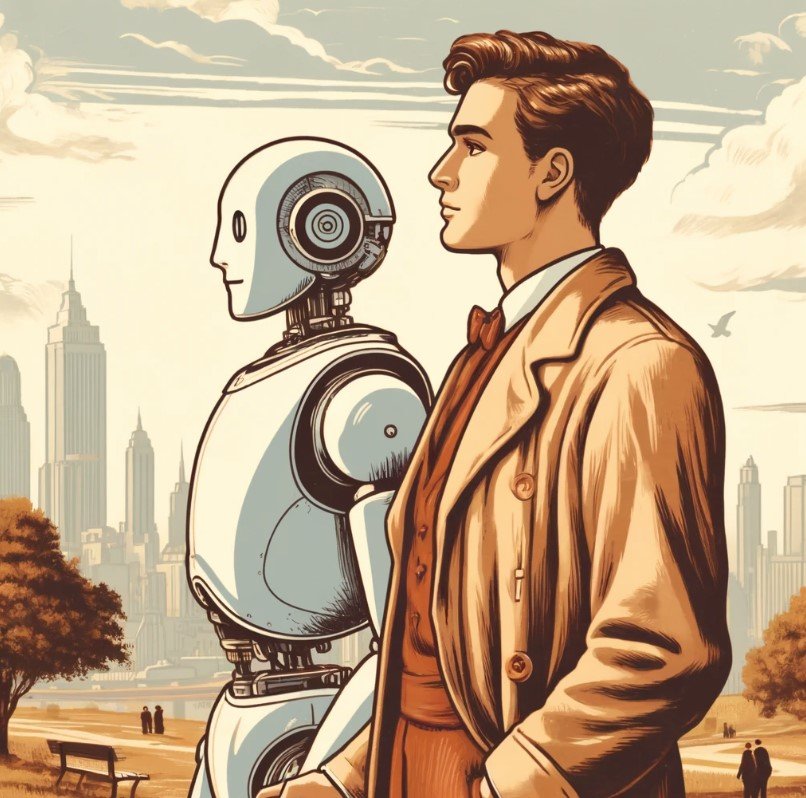Navigating Tomorrow: AI's Role in Future Skills Development
In a recent chat, with GRIST MD, Peter GRIST and our resident AI expert Stacey Makshakova, we explored how GRIST is embracing this challenge head-on by integrating artificial intelligence (AI) into their learning and development (L&D) processes.
Why AI?
When asked, ‘what motivated GRIST to integrate AI into its processes?’, Peter Grist pointed to the unprecedented rate of change shaping our society today as the key motivator.
‘Everything we've just, we've been through – COVID a couple of years ago that caused massive change and disruption to what we do, particularly in white collar industries, and we're only just beginning to see the changes that are going to come down the line due to climate change. Now on the on top of that, we've got this thing called AI… and this increasing rate of change that we're seeing in society is actually leading to a widening of the skills gap,’
Projections from the World Economic Forum indicate that 60% of workers will require retraining within the next five years.
‘At GRIST, we see AI as a powerful tool to address these challenges head-on. Traditional approaches to skills development, which relied heavily on educational systems and market availability of skilled workers, are no longer sufficient in the face of such rapid change. Our current L&D systems were built for a different time and are ill-equipped to tackle the challenges ahead. It's clear that we need innovative solutions to revolutionize how we approach learning and development in this dynamic landscape.’ Peter says.
AI: Augmentation, not Replacement
Peter stressed the importance of viewing AI as a tool to augment human capabilities rather than as a replacement for them. He referenced a report from McKinsey which suggests that as automation increasingly handles routine tasks, human roles will shift towards areas that require emotional intelligence, social skills, cognitive abilities, and problem-solving capabilities.
‘We do see it very much about a human-computer connection and tools to augment what we do well rather than actually replacing it.’ Peter affirmed.
This perspective reflects an organisation wide approach at GRIST to valuing the unique contributions of both humans and AI, focusing on how they can complement each other in the workforce of the future.
Enter, BON
BON, the GRIST coachbot, is GRIST’s first AI offering. A tool designed to offer high-quality coaching to leaders who may have limited time or coaching skills, BON follows the ACDC coaching model, breaking down coaching conversations into Agenda, Current state, Desired state, and Commitment.
Stacey Makshakova, Insights & Innovation Manager at GRIST is responsible for building BON. ‘We've been experimenting with generative AI platforms and realised that it could be a great tool to address the frequency issue many coaches struggle with and provide a kind of on-demand coaching.’
Illustrating BON's functionality, Stacey demonstrated a coaching conversation, showcasing how it utilises open-ended questions to guide users towards solutions. She emphasised that BON's responses can vary, providing a unique conversation experience each time.
Looking ahead, Peter ponders future iterations of BON, envisioning its role in coaching conversations, goal setting, reflection, and performance discussions. ‘So that's where we see the future of BON going, as they become a support, a resource, and a tool that's available at every stage of someone's learning journey.’
Welcome to the future
As GRIST pioneers the integration of AI into their L&D processes, we invite you to explore the future of learning and development with BON, their AI coachbot.
Transform skills development and experience the power of AI augmentation firsthand with BON and stay ahead of the curve.
Try BON, the GRIST coachbot now
You can also watch the full conversation with Peter Grist and Stacey Makshakova here



